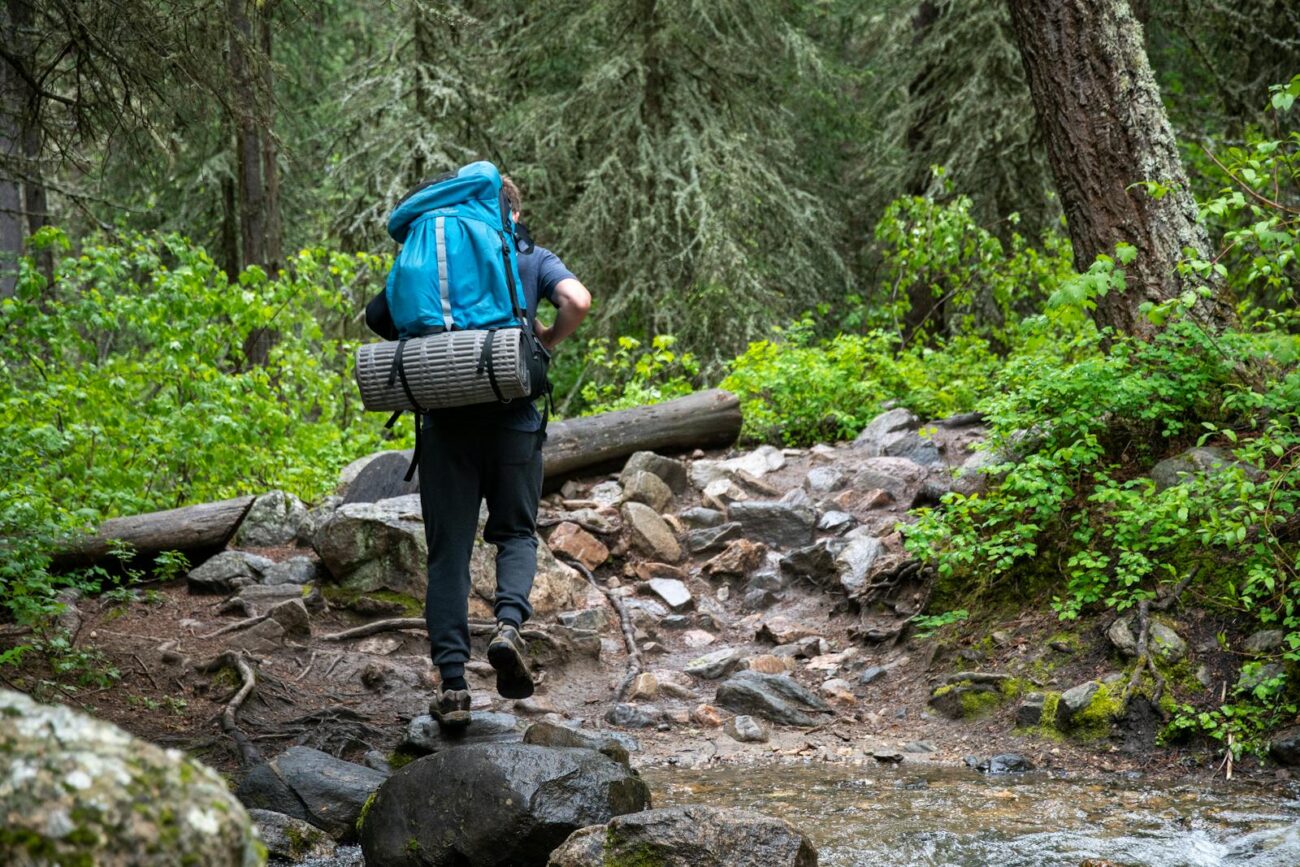Exploring America’s wilderness trails offers breathtaking scenery and the thrilling possibility of wildlife encounters. From the dense forests of the Pacific Northwest to the sprawling deserts of the Southwest, the United States is home to a diverse array of wild animals that outdoor enthusiasts might encounter during their adventures. While most wildlife sightings are memorable and harmless experiences, knowing how to react when face-to-face with these creatures can be crucial for both your safety and theirs. This guide explores 15 common wild animals you might meet on U.S. trails and provides practical advice on how to respond appropriately during these encounters.
1. Black Bears
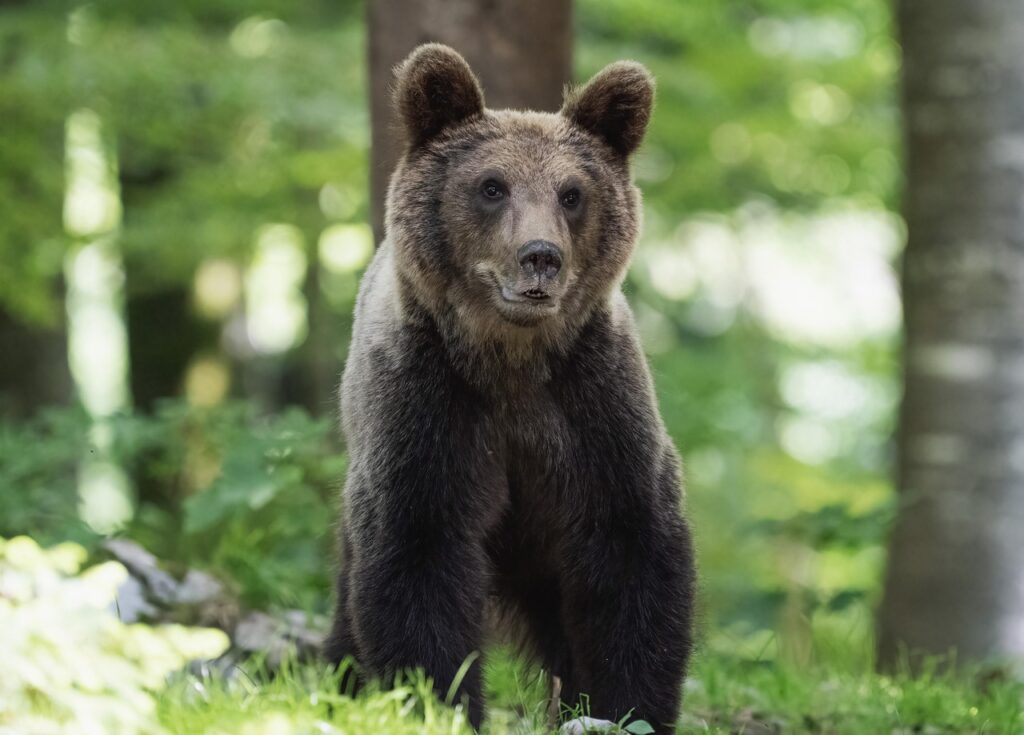
Black bears are common throughout many U.S. forests and mountains, with populations in at least 40 states. Despite their name, these bears can be brown, cinnamon, or even blonde in color, making identification by color alone unreliable. If you encounter a black bear on a trail, remain calm and make yourself known by speaking in a firm, loud voice while slowly backing away—never run, as this may trigger a chase response. Black bears rarely attack humans, and most encounters end with the bear retreating once it realizes you’re human. In the extremely rare case of an attack, unlike with grizzlies, wildlife experts recommend fighting back aggressively, targeting the bear’s face and muzzle.
2. Grizzly Bears
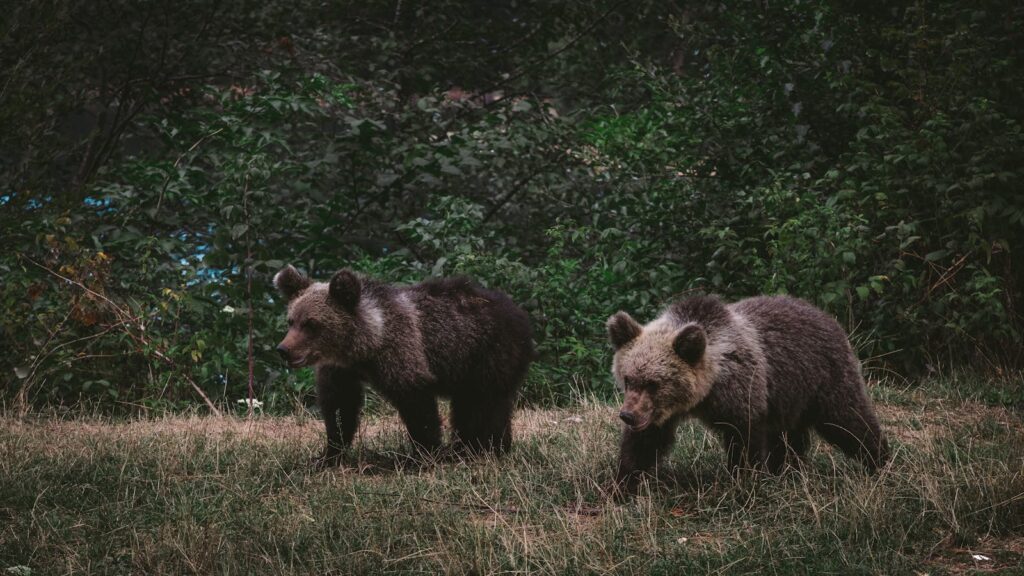
Grizzly bears, with their distinctive shoulder hump and concave facial profile, primarily inhabit parts of Wyoming, Montana, Idaho, and Washington. These massive creatures can weigh up to 700 pounds and should be given extensive space if spotted on trails. If a grizzly notices you, avoid direct eye contact, speak calmly to identify yourself as human, and slowly back away without turning your back. Should a grizzly charge, wildlife experts recommend playing dead by lying flat on your stomach with your hands clasped behind your neck and legs spread to prevent being rolled over. Grizzly attacks are typically defensive rather than predatory, so playing dead may convince the bear you’re no longer a threat. Carry bear spray when hiking in grizzly country, as it’s proven effective in deterring aggressive bears.
3. Mountain Lions

Mountain lions (also called cougars or pumas) range throughout the western United States and Florida, though they’re rarely seen due to their elusive nature. These powerful predators typically avoid humans, but if you do encounter one, the recommended response differs significantly from bear protocols. Make yourself appear larger by raising your arms and opening your jacket if possible, while maintaining direct eye contact with the cougar. Speak firmly and loudly while backing away slowly—never turn your back or run. If a mountain lion approaches, throw rocks or sticks at it without crouching or bending over. In the extremely rare case of an attack, fight back vigorously using whatever tools you have available, targeting the animal’s eyes and nose.
4. Moose
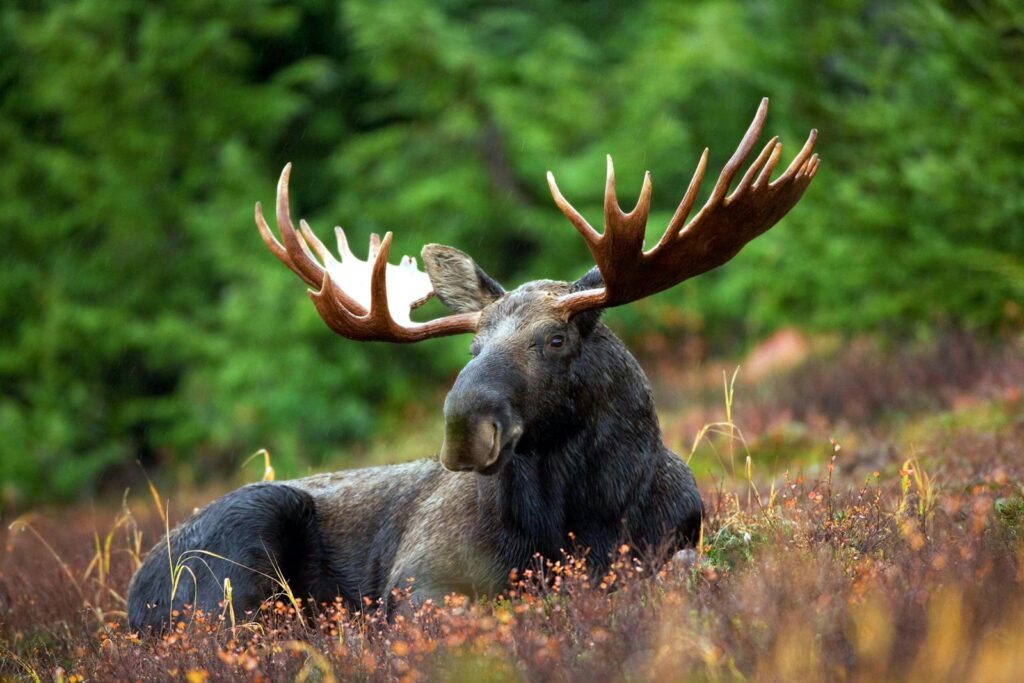
Moose may appear docile, but they’re actually among the most dangerous animals to encounter on trails, particularly during mating season (September-October) or when cows are with calves (May-June). These massive mammals, weighing up to 1,500 pounds, can charge at speeds of 35 mph and are responsible for more attacks on humans than bears in areas where they coexist. Warning signs of an agitated moose include raised hackles, lowered head, and ears pinned back. If you notice these behaviors, back away immediately and put substantial obstacles between yourself and the moose. If a moose charges, run away as quickly as possible and find shelter behind a solid object like a tree or large rock. Unlike with predators, running from a moose is the recommended response.
5. Rattlesnakes

Rattlesnakes inhabit nearly every state in the continental U.S., with particular abundance in the Southwest and Southeast regions. These venomous reptiles are typically not aggressive unless threatened and will usually use their distinctive rattle as a warning before striking. When hiking in rattlesnake country, stick to clear paths, wear closed-toe boots, and use hiking poles to probe areas ahead of you in tall grass. If you hear the warning rattle, stop immediately, locate the snake if possible, and slowly back away giving it a wide berth of at least 5 feet. Should a bite occur, remain calm, remove jewelry or tight clothing near the bite area, keep the affected limb below heart level, and seek immediate medical attention—do not apply tourniquets, cut the wound, or attempt to suck out venom, as these outdated methods can cause more harm.
6. Bison

Bison may appear slow and peaceful, but these one-ton animals can charge at speeds up to 35 mph and are responsible for more injuries to Yellowstone National Park visitors than any other animal. Despite their massive size, bison can be surprisingly nimble and unpredictable. When encountering bison on trails, give them an extraordinary amount of space—the National Park Service recommends staying at least 25 yards (75 feet) away. If a bison raises its tail in a question-mark shape, paws the ground, or snorts, these are warning signs of potential aggression, and you should immediately increase your distance. Never approach bison, even if they appear calm, as their behavior can change in an instant.
7. Wolves
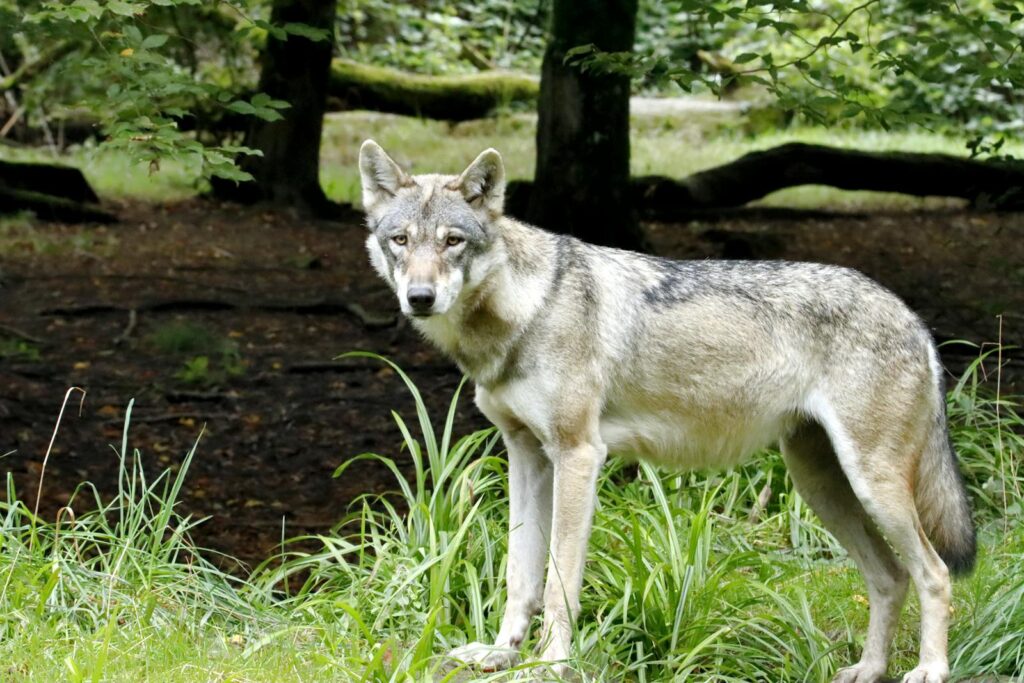
Gray wolves have made a remarkable comeback in parts of the northern Rockies, Great Lakes region, and Pacific Northwest after decades of conservation efforts. These intelligent social predators are typically wary of humans and attacks are extremely rare—in fact, there have been only two documented fatal wolf attacks in North America in the last century. If you’re fortunate enough to spot wolves in the wild, maintain a respectful distance and enjoy the rare sighting without approaching. Should wolves notice you and appear curious, stand tall, make noise, and wave your arms to identify yourself as human. Never run from wolves, as this might trigger a chase response. Like most wild animals, wolves almost always choose to avoid human interaction when given the chance.
8. Elk

Elk populate many western states and parts of the eastern U.S. where they’ve been reintroduced, with significant populations in Rocky Mountain National Park, Yellowstone, and Olympic National Park. Though typically less aggressive than moose, bull elk during the fall rutting season (September-October) can be extremely dangerous and territorial. Cow elk protecting calves in spring can also pose risks to hikers who venture too close. When encountering elk on trails, maintain a distance of at least 50 yards and be particularly cautious if you notice a bull bugling or displaying dominance behaviors. If an elk approaches, back away slowly and find a barrier like a car or large tree—elk have been known to charge and gore humans who violated their comfort zone.
9. Coyotes

Coyotes have adapted to thrive in environments across the entire continental United States, from remote wilderness to urban parks. These intelligent canids typically avoid humans, but in some areas where they’ve become habituated to people, they may display bold behavior. If you encounter a coyote that doesn’t immediately retreat, haze it by making yourself big, waving arms, making loud noises, and throwing small objects near (but not at) the animal. Never run from coyotes, as this could trigger a chase response. Coyote attacks on adults are extremely rare, but small children should be kept close in areas where coyotes are active. Report any coyotes that appear sick or unusually aggressive to local wildlife authorities immediately.
10. Alligators
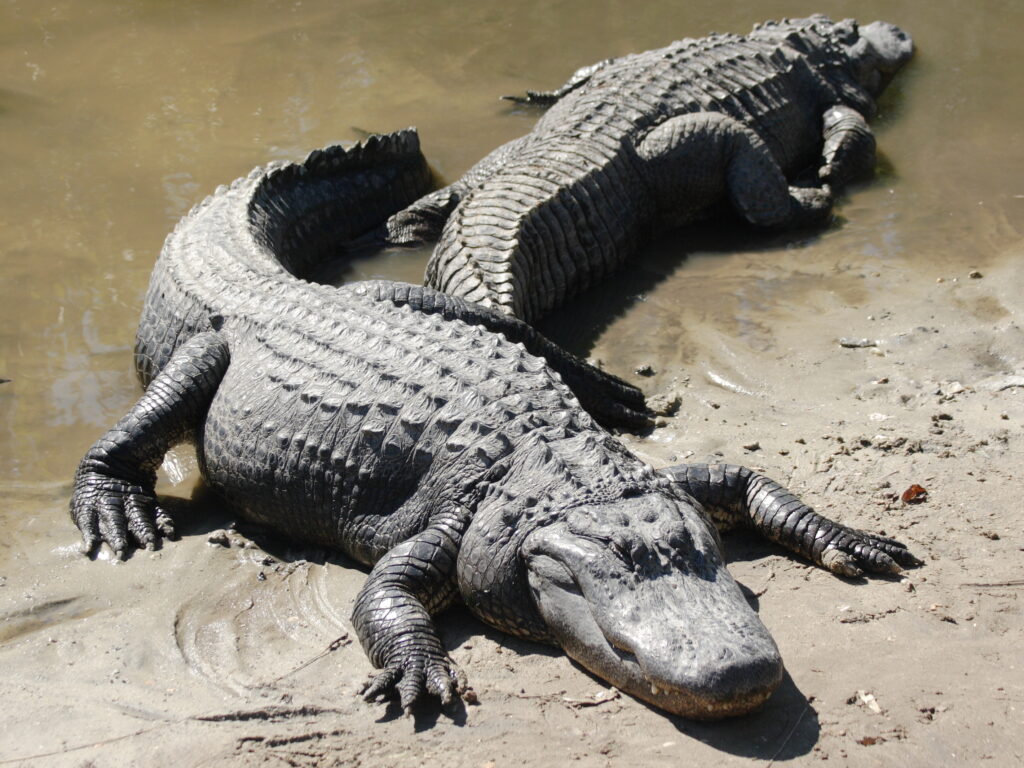
American alligators inhabit freshwater environments throughout the southeastern United States, with Florida and Louisiana hosting the largest populations. When hiking in alligator country, maintain vigilance near any body of water, even small ones, as alligators can travel between water sources. Never approach alligators, even if they appear docile, as they can move surprisingly quickly in short bursts. If you encounter an alligator on a trail, give it a wide berth of at least 30 feet and back away slowly—alligators typically don’t pursue humans on land unless provoked or defending a nest. Swimming in alligator habitat should be avoided, particularly during dawn and dusk when they actively feed. Keep pets on leashes in alligator territory, as they resemble the natural prey size that might trigger a predatory response.
11. Wild Boars

Feral hogs and wild boars have established populations in at least 35 states, with the highest concentrations in Texas, Florida, and the southern states. These intelligent, adaptable animals can weigh up to 400 pounds and are equipped with sharp tusks capable of inflicting serious injuries. Wild boars are generally wary of humans but can be unpredictable and dangerous if cornered or if sows are with piglets. If you encounter wild boars on a trail, remain calm and slowly back away without turning your back. Try to put trees or other obstacles between you and the animals. Unlike with many predators, climbing a tree is an effective escape if a wild boar charges, as they cannot climb. Making loud noises and appearing large may deter an approaching boar, but be prepared to move quickly if it continues to advance.
12. Bobcats
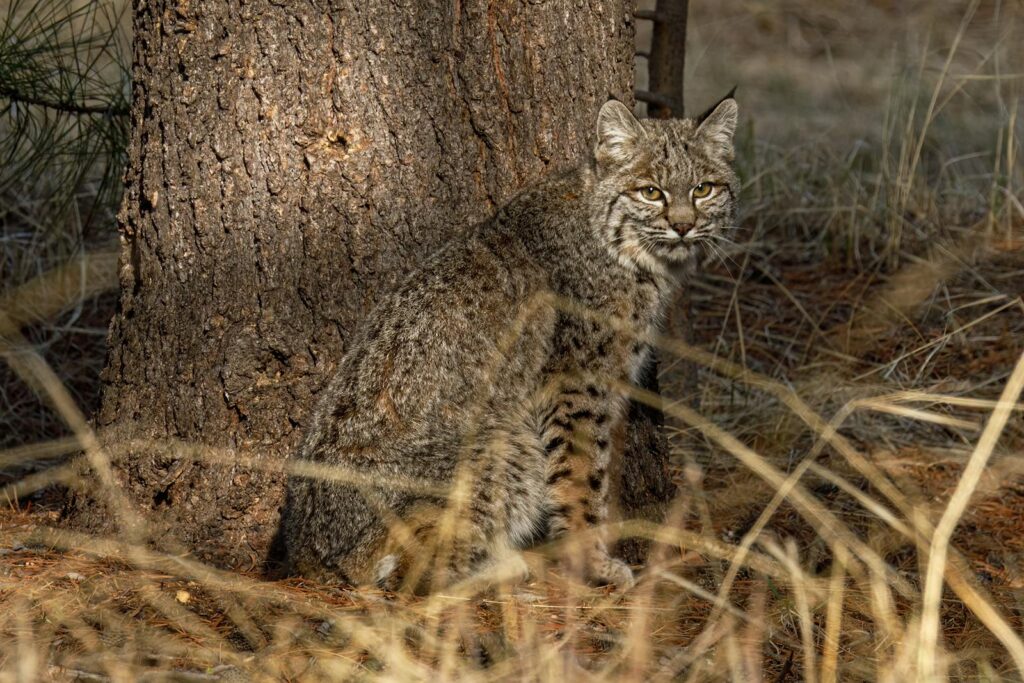
Bobcats are present in nearly every U.S. state but are rarely seen due to their secretive nature and primarily nocturnal habits. These medium-sized felines typically weigh between 15-35 pounds and pose very little threat to humans. If you’re fortunate enough to spot a bobcat on a trail, the animal will likely retreat quickly once it notices your presence. Should a bobcat not immediately flee, maintain distance, speak firmly, and back away slowly while making yourself appear larger. Bobcat attacks on humans are extremely rare and almost always involve rabid animals displaying unusual behavior. Signs of possible rabies include staggering, unusual aggression, or apparent disorientation—if you notice these behaviors, leave the area immediately and report the sighting to local wildlife authorities.
13. Wolverines

Wolverines are rare, elusive members of the weasel family found in remote alpine regions of the northern Rockies, Cascades, and Sierra Nevada mountains. Despite their relative small size (typically 20-40 pounds), wolverines have a fierce reputation and extraordinary strength for their size. Encounters with hikers are extremely uncommon due to the animal’s preference for remote high-country habitats and naturally shy disposition toward humans. If you’re among the very few hikers lucky enough to spot a wolverine in the wild, maintain your distance and enjoy the rare sighting—wolverines typically avoid human contact when possible. Make noise and back away slowly if the wolverine appears to notice you. There are virtually no documented attacks on humans by wild wolverines in North America, making them more of a backcountry legend than an actual threat to hikers.
14. Javelinas
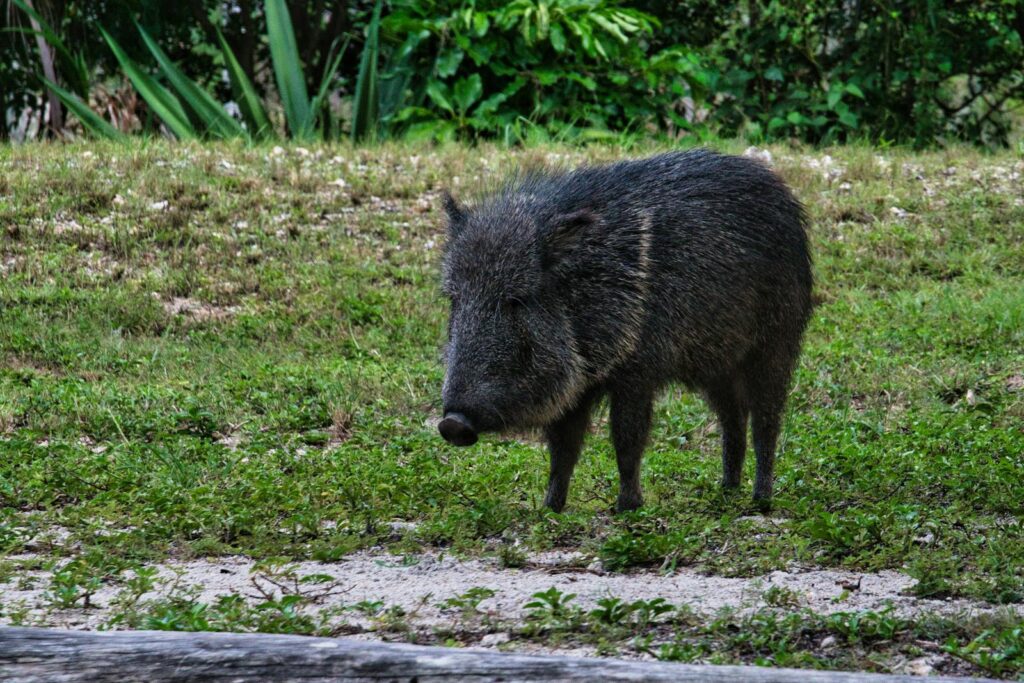
Javelinas (also called peccaries) inhabit the desert regions of the southwestern United States, particularly in Arizona, New Mexico, and Texas. Though they resemble pigs, javelinas are actually a different species altogether and typically travel in small family groups. These desert dwellers have poor eyesight but an excellent sense of smell, and they may not immediately recognize humans as a threat if approached. When encountering javelinas on a trail, give them plenty of space—at least 30-50 feet—and allow them to continue on their way. If javelinas approach, make noise by yelling or clapping to alert them to your presence. Female javelinas with young can be particularly defensive, so be especially cautious if you notice babies in the group. Keep dogs leashed in javelina territory, as dogs and javelinas have natural animosity toward each other that can quickly escalate to dangerous confrontations.
15. Foxes

Red and gray foxes are found throughout the United States in diverse habitats ranging from forests to suburban parks. These small canids typically pose no threat to humans and will usually flee when spotted on trails. However, foxes that appear unusually bold or show no fear of humans may be habituated due to feeding or, more concerning, infected with rabies. If you encounter a fox that approaches rather than retreats, make loud noises, appear large, and back away slowly. Never attempt to feed or touch wild foxes, regardless of how tame they may appear. Foxes displaying staggering movements, partial paralysis, or unusually aggressive behavior may be rabid and should be reported to local wildlife authorities immediately after safely leaving the area.
General Wildlife Safety Tips for All Trail Encounters

Regardless of which animals you might encounter, certain universal practices can help ensure safe wildlife viewing experiences. Always maintain appropriate distance—if your presence causes an animal to change its behavior, you’re too close. Make noise while hiking to avoid surprising animals, as most wildlife conflicts occur when creatures are startled. Never approach, feed, or attempt to touch wild animals, no matter how docile they may appear. Carry appropriate deterrents for your hiking region, such as bear spray in bear country. Learn to recognize signs of stress or aggression in common wildlife species before hitting the trails. Keep children close and dogs leashed in areas with known wildlife activity. Remember that we are visitors in these animals’ homes, and respectful behavior not only keeps us safe but also protects the wildlife that makes our natural spaces so special.
The American wilderness offers unparalleled opportunities to observe wildlife in their natural habitats, creating memories that last a lifetime. By understanding how to safely coexist with the animals that call these places home, we can minimize negative interactions while maximizing our appreciation for these magnificent creatures. Most wild animals have no desire to engage with humans and will avoid contact when given the opportunity. With proper knowledge, reasonable precautions, and respectful attitudes, trail users can enjoy wildlife sightings as the privileges they truly are—glimpses into the wild world that exists alongside our own.

